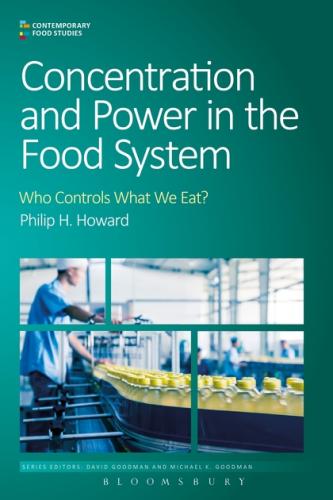Concentration and Power in the Food System - New book by CRFS Affiliate Philip H. Howard
Concentration and Power in the Food System Who Controls What We Eat? Book by Philip H. Howard Associate Professor at Michigan State University.
Concentration and Power in the Food System Who Controls What We Eat?
Book by Philip H. Howard Associate Professor at Michigan State University. He is also President of the Agriculture, Food and Human Values Society (AFHVS) and a member of the International Panel of Experts on Sustainable Food Systems.
It will be released February 25th 2016 and is available for pre-order.
description from Bloomsbury Publishing:
About Concentration and Power in the Food System
Nearly every day brings news of another merger or acquisition involving the companies that control our food supply. Just how concentrated has this system become? At almost every key stage of the food system, four firms alone control 40% or more of the market, a level above which these companies have the power to drive up prices for consumers and reduce their rate of innovation. Researchers have identified additional problems resulting from these trends, including negative impacts on the environment, human health, and communities.
This book reveals the dominant corporations, from the supermarket to the seed industry, and the extent of their control over markets. It also analyzes the strategies these firms are using to reshape society in order to further increase their power, particularly in terms of their bearing upon the more vulnerable sections of society, such as recent immigrants, ethnic minorities and those of lower socioeconomic status. Yet this study also shows that these trends are not inevitable. Opposed by numerous efforts, from microbreweries to seed saving networks, it explores how such opposition has encouraged the most powerful firms to make small but positive changes.
Table Of Contents
1. Food System Concentration: A Political Economy Perspective
2. Reinterpreting Antitrust: Retailing
3. Structuring Dependency: Distribution
4. Engineering Consumption: Packaged Foods and Beverages
5. Manipulating Prices: Commodity Processing
6. Subsidizing the Treadmill: Farming and Ranching
7. Enforcing the New Enclosures: Agricultural Inputs
8. Standardizing Resistance: The Organic Food Chain
9. Endgame?



 Print
Print Email
Email




